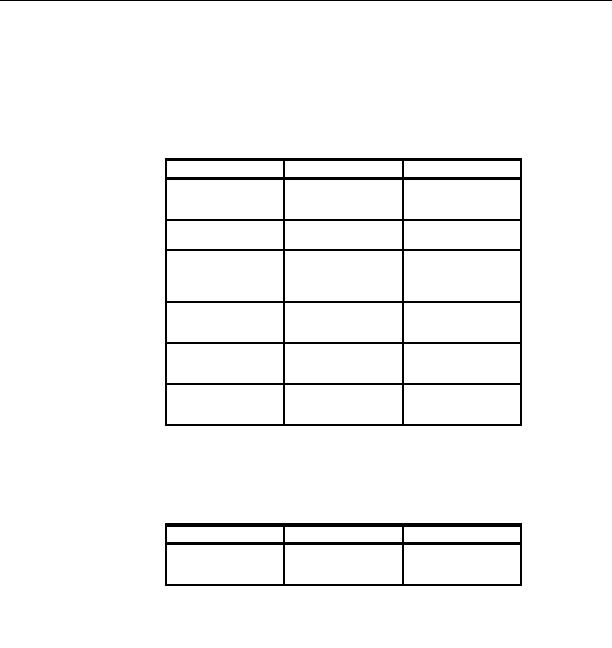
Comparing operators
There is a plethora of function as listed in Table 7 5, Table 7 6, and Table 7 7
where syntax or implementation can be quite different. The tables attempt to
summarize these differences and show code snippets for some selected
functions on how to convert a MySQL function to DB2. In many cases you will
find the DB2 CASE expression is really helpful when function mapping is
required.
Table 7 5 MySQL and DB2 UDB operator comparison
MySQL
DB2
Comments
logical NOT as ! in
VALUES CASE WHEN
Implement using CASE
SELECT list
1!=1 THEN 0 ELSE 1 END
expression and VALUES
statement
%
MOD
In MySQL % is a synonym
for modulo
& (bitwise and)
not available. Implement
Refer to UDF BIT_AND in
using UDF
Appendix A.1, Sample
code for BIT_AND on
page 336
logical AND as && in
CASE
Implement using CASE
SELECT list
expression and VALUES
statement
not equal, <> or != in
SELECT CASE WHEN
Implement using CASE
SELECT list:
1<> 1 THEN x ELSE y
expression
select 1<>1
END
Function = in
SELECT list:
CASE
Implement using CASE
select (1=1)
expression and VALUES
statement
Functions converting date and time
Working with date and time functions and operators uncovers in many cases the
implementation differences for the various DBMS. Table 7 6 lists some date and
time related functions. You may also find such functions in the SQL92 and ODBC
standards.
Table 7 6 Date and Time related functions
MySQL
DB2 UDB
Comments
DATE_FORMAT
various options such as
Formatting DATE, TIME
DAYNAME,
data types
MONTHNAME, etc.
170
MySQL to DB2 UDB Conversion Guide
footer
Our partners:
PHP: Hypertext Preprocessor Cheap Web Hosting
JSP Web Hosting
Ontario Web Hosting
Jsp Web Hosting
Cheapest Web Hosting
Java Hosting
Cheapest Hosting
Visionwebhosting.net Business web hosting division of Vision Web Hosting Inc.. All rights reserved

